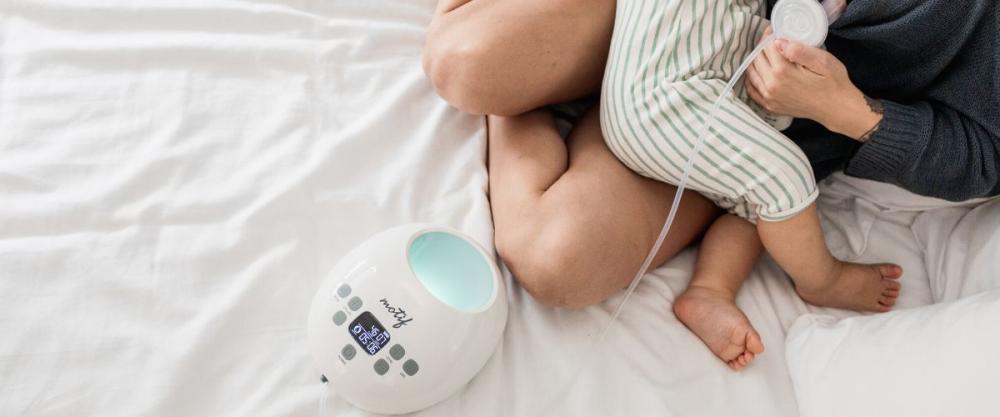The short answer to this is “yes!” but let’s get into why and how pumping breast milk burns calories, along with approximately how many are burned. Certain variables play into this, such as frequency of pumping sessions, amounts expressed, if pumping for one or multiples, and more.
Breastfeeding vs. Pumping: Does It Matter?
Variables Summarized
- Exclusivity or supplemented?
- Basal metabolic rate (resting rate)
- Activity levels
- Age of the baby/caloric density of the milk
- Frequency of the feedings
- Milk produced to milk expressed ratio
- Breast pump efficacy
- Prepregnancy weight
- Weight gain during pregnancy
Exclusive breastfeeding means no supplementation of another source or introduction of solid foods (baby food, cereals, etc.) Breastfeeding mothers who exclusively do so can expect to burn up to 500 calories a day on average. This will vary depending on if you're breastfeeding multiples, individual metabolism, and weight status +/-, as well as the age of the baby.
If supplementation through donor milk or formula feeding has been introduced, there are fewer ounces being demanded of the body. So naturally, there are fewer calories burned, along with less breast milk produced by the mother over time. We can expect to draw a direct parallel, in theory, to exclusive pumping.
Breast Milk Production
Depending on the age of the baby, breastfed babies will consume an average of 19-36 ounces of milk a day. The same is typically true for bottle-fed babies, especially if following hunger/fullness cues and pacing the feedings to 2-4 ounces.


Calories Expended
How many calories does breastfeeding burn?
There are 20-22 calories per ounce of breast milk. The recommendation is to have 10-12 feedings a day. This comes out to an average of over 500 calories burned a day.
Also in the mix is the energy spent reproducing the milk expressed in order to maintain the milk supply. You can figure in the energy it takes to hold the baby vs. holding up the pumping equipment, and whether the mother is sitting or standing... so many potential variables! Having a good breast pump to keep up with the demand will also impact the number of pumping sessions it will last through, the number of ounces it consistently removes, and the stimulation it provides the breast tissue to continue replenishing the milk!
Breastfeeding Basics
Pumping and breastfeeding moms both worry about getting enough calories to support milk supply and production. However, depending on pre-pregnancy weight, and the amount gained during pregnancy your body is prepared to produce the amount of milk needed without taking on additional calories.
It’s one of the reasons that lactation (breast milk production) is a crucial element of weight loss postpartum. Reasonable weight gain throughout the pregnancy not only helps the baby grow and develop but prepares for milk production. Eating more will not have a direct correlation to milk supply increases.
Not only are calories and fat stored used, but the mother’s nutritional stores, such as vitamins and minerals. The body prioritizes the baby both in the womb and in the breast milk, so the mother will need to replenish these stores for her own sake.
It's not recommended to take in fewer calories and go on restrictive diets, but to incorporate nutrient-dense snacks to fuel your day. A return to prepregnancy weight status can happen in most cases, even with extra calories added to the daily intake.
Society throws around terms like focusing on a “healthy diet” or a “balanced diet,” pressuring the loss of “baby weight.” But ultimately when it comes to postpartum life, nursing mothers need to be supported more in focusing on nutritionally-rich foods, gentle activity levels, and less on calorie intake and body weight. Sound medical advice and lactation support are key elements to milk production and the amount of calories needed for the baby.


Supporting a Healthy Pumping Routine
Determine how much breast milk is needed for your baby. If you are exclusively breastfeeding your baby and you decide to implement a pumping regime for a stock supply or if recommended to boost supply, knowing how much is needed can be the difference between a healthy stash and an oversupply. If pumping exclusively or part-time, your pumping schedule will look quite different.
Pumping or otherwise expressing your milk should happen as often as the baby would feed if it's meant to replace the feeding. This typically looks like pumping every 2-4 hour period for approximately 15 minutes.
Information provided in blogs should not be used as a substitute for medical care or consultation.







